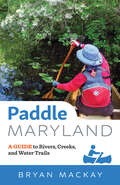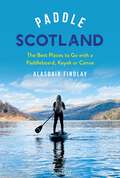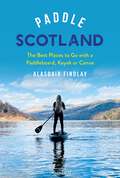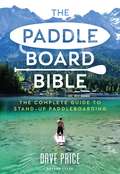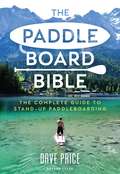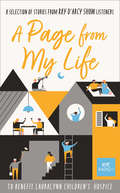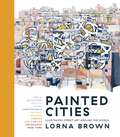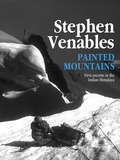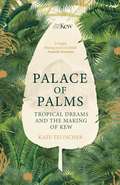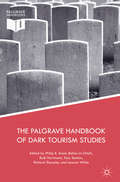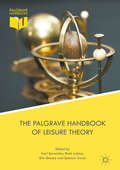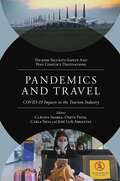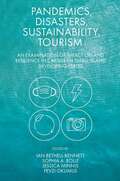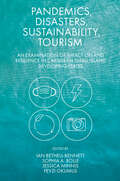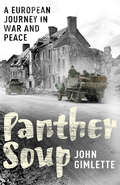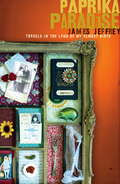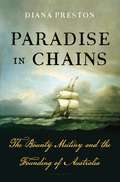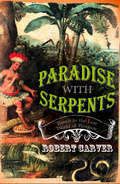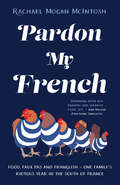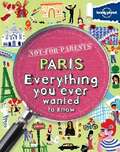- Table View
- List View
Paddle Maryland: A Guide to Rivers, Creeks, and Water Trails
by Bryan MacKayWith the Chesapeake Bay;¢;‚¬;€?the largest estuary in the United States;¢;‚¬;€?the Potomac, Monocacy, and Patapsco Rivers, and countless streams, creeks, swamps, and marshes, Maryland is an ideal locale for people to take to the water and enjoy the natural beauty of the Free State.In Paddle Maryland, lifelong Marylander and devoted paddler Bryan MacKay presents twenty-two of his favorite canoe and kayak trips. From lazy floats down the Potomac to swamp excursions on the Eastern Shore, each trip has been selected for its incredible scenery and ample opportunities to observe nature. Included are both tidal and nontidal paddling trips, and MacKay, an ecologist, describes the wildlife and vegetation you will encounter along the way. Considering biodiversity, conservation, and climate change, MacKay also discusses what these issues mean for Maryland;€™s waterways and their inhabitants.With its beautiful illustrations and wealth of practical advice and information, this indispensable guide will appeal to all who love to explore the natural wonders of Maryland with a paddle in their hands.Paddle Maryland is a companion guide to Hike Maryland and Cycle Maryland.
Paddle Scotland: The Best Places to Go with a Paddleboard, Kayak or Canoe
by Alasdair FindlayThe definitive guide to seeing all the wonders of Scotland under paddle power.Scotland is one of the most appealing destinations for kayakers, canoeists and paddleboarders from all over the world. That's because if there is one country best seen from the water, it is Scotland. Loch Ness contains more water than all of the rivers and lakes in England and Wales combined – and there are 27,000 other lochs to explore as well. What's more, with 125,000km of rivers and 800 islands, there's always somewhere new to paddle. And the spectacular Scottish scenery only adds to the appeal.This book is the complete guide to paddling the wonderfully varied waterways, lochs, rivers and coasts of Scotland, compiled by Ally Findlay, a paddleboard instructor and tour guide based in Glasgow. He covers all regions of Scotland:- South Scotland, including the coast at Kirkcudbright and Fleet Bay, and inland to Loch Ken, and the Galloway Canoe Trail- Central Scotland, including Loch Lomond and the beautiful Trossachs National Park- East Coast Scotland, including the Forth Bridges- West Coast Scotland, from the coast at Arasaig to lochs and rivers including the amazing Rannoch Moor- Scottish Highlands, which become a magical playground in the northwest following the Inverpoly routesFrom short paddles to day trips into the stunning wilderness, this book covers excursions for all occasions and all levels of ability, explaining where to begin and what to look out for. Most are well suited to canoe and kayak, but going further, some are even better explored standing up on a paddleboard, including cross-Scotland routes such as the Shin System.With beautiful and evocative photography, and clear maps, this is the essential guide to seeing Scotland under paddle power, exploring where to go, how to get there and what to see en route.
Paddle Scotland: The Best Places to Go with a Paddleboard, Kayak or Canoe
by Alasdair FindlayThe definitive guide to seeing all the wonders of Scotland under paddle power.Scotland is one of the most appealing destinations for kayakers, canoeists and paddleboarders from all over the world. That's because if there is one country best seen from the water, it is Scotland. Loch Ness contains more water than all of the rivers and lakes in England and Wales combined – and there are 27,000 other lochs to explore as well. What's more, with 125,000km of rivers and 800 islands, there's always somewhere new to paddle. And the spectacular Scottish scenery only adds to the appeal.This book is the complete guide to paddling the wonderfully varied waterways, lochs, rivers and coasts of Scotland, compiled by Ally Findlay, a paddleboard instructor and tour guide based in Glasgow. He covers all regions of Scotland:- South Scotland, including the coast at Kirkcudbright and Fleet Bay, and inland to Loch Ken, and the Galloway Canoe Trail- Central Scotland, including Loch Lomond and the beautiful Trossachs National Park- East Coast Scotland, including the Forth Bridges- West Coast Scotland, from the coast at Arasaig to lochs and rivers including the amazing Rannoch Moor- Scottish Highlands, which become a magical playground in the northwest following the Inverpoly routesFrom short paddles to day trips into the stunning wilderness, this book covers excursions for all occasions and all levels of ability, explaining where to begin and what to look out for. Most are well suited to canoe and kayak, but going further, some are even better explored standing up on a paddleboard, including cross-Scotland routes such as the Shin System.With beautiful and evocative photography, and clear maps, this is the essential guide to seeing Scotland under paddle power, exploring where to go, how to get there and what to see en route.
Paddle Steamer, 1822 AD (large print)
by RnibIn this image of a paddle steamer the stern is in the bottom left corner of the page and the bow to the right of the page. There is a locator dot shown, which will be at the top left of the page when the image is the right way up. Just up from the stern there is a flag flying which is stretched out straight to the left. To the right of this is a cabin with two portholes. Down from the cabin is the hull which is long and low and goes right across the page. It has five portholes on the stern half just above the waterline. The paddle wheel with its curved cover is in the middle and two more portholes at the bow end to the right. Up and to the right from here is the bowsprit which sticks out almost horizontally. Ropes lead from the bowsprit up and left to the main mast. This carries a furled mainsail. Left of this is a tall funnel and left again is the mizzen mast with a small furled mizzen sail. There is no rudder as the large paddle wheels could rotate in either direction and at different speeds, allowing the steamer to go forwards, backwards and to turn.
Paddle Steamer, 1822 AD (UEB contracted)
by RnibIn this image of a paddle steamer the stern is in the bottom left corner of the page and the bow to the right of the page. There is a locator dot shown, which will be at the top left of the page when the image is the right way up. Just up from the stern there is a flag flying which is stretched out straight to the left. To the right of this is a cabin with two portholes. Down from the cabin is the hull which is long and low and goes right across the page. It has five portholes on the stern half just above the waterline. The paddle wheel with its curved cover is in the middle and two more portholes at the bow end to the right. Up and to the right from here is the bowsprit which sticks out almost horizontally. Ropes lead from the bowsprit up and left to the main mast. This carries a furled mainsail. Left of this is a tall funnel and left again is the mizzen mast with a small furled mizzen sail. There is no rudder as the large paddle wheels could rotate in either direction and at different speeds, allowing the steamer to go forwards, backwards and to turn.
Paddle Steamer, 1822 AD (UEB uncontracted)
by RnibIn this image of a paddle steamer the stern is in the bottom left corner of the page and the bow to the right of the page. There is a locator dot shown, which will be at the top left of the page when the image is the right way up. Just up from the stern there is a flag flying which is stretched out straight to the left. To the right of this is a cabin with two portholes. Down from the cabin is the hull which is long and low and goes right across the page. It has five portholes on the stern half just above the waterline. The paddle wheel with its curved cover is in the middle and two more portholes at the bow end to the right. Up and to the right from here is the bowsprit which sticks out almost horizontally. Ropes lead from the bowsprit up and left to the main mast. This carries a furled mainsail. Left of this is a tall funnel and left again is the mizzen mast with a small furled mizzen sail. There is no rudder as the large paddle wheels could rotate in either direction and at different speeds, allowing the steamer to go forwards, backwards and to turn.
The Paddleboard Bible: The complete guide to stand-up paddleboarding
by David PriceStand-up paddleboarding is the fastest growing watersport in the world - with only a little knowledge and practice, pretty much anyone can get up and get moving, and then there's no limit to where SUP can take you. This complete guide gives you everything you need to know to get started, and much more besides.All the basics are here, from fundamental equipment (a guide to boards, including bargain-priced inflatables, as well as paddles, clothing and simple safety gear) to essential techniques (getting on, getting moving and, just as importantly, landing and getting off). Along with challenges and games to play with your new paddleboarding buddies, the book explores places to go and things to see, from rivers and canals to coastlines and travel further afield. The book also explains all the important stuff you might need to understand about weather, tides, waves and currents.However, The Paddleboard Bible then goes much further. It will take you on paddleboard adventures, from night paddles (showing you the world from the water in a way you've probably never seen it before) to wildlife-spotting safaris and unique photography opportunities; it even reveals the benefits of fishing from a paddleboard. And it's not all gentle stuff – for adrenaline junkies there is SUP surfing, riding white water rapids and for the more competitive types, SUP racing.SUP is also great for fitness (you haven't done yoga until you've done SUP yoga) and there's a booming social side too. It's a fantastic way to meet new people, join groups, go to events and go on unique tours.However you want to get into stand-up paddleboarding, whether you're curious about trying it one afternoon, want to dive into it as a new hobby or really get involved in the scene and the lifestyle, then The Paddleboard Bible is the one-stop book that covers everything you need to know about the most accessible and inexpensive paddlesport.
The Paddleboard Bible: The complete guide to stand-up paddleboarding
by David PriceStand-up paddleboarding is the fastest growing watersport in the world - with only a little knowledge and practice, pretty much anyone can get up and get moving, and then there's no limit to where SUP can take you. This complete guide gives you everything you need to know to get started, and much more besides.All the basics are here, from fundamental equipment (a guide to boards, including bargain-priced inflatables, as well as paddles, clothing and simple safety gear) to essential techniques (getting on, getting moving and, just as importantly, landing and getting off). Along with challenges and games to play with your new paddleboarding buddies, the book explores places to go and things to see, from rivers and canals to coastlines and travel further afield. The book also explains all the important stuff you might need to understand about weather, tides, waves and currents.However, The Paddleboard Bible then goes much further. It will take you on paddleboard adventures, from night paddles (showing you the world from the water in a way you've probably never seen it before) to wildlife-spotting safaris and unique photography opportunities; it even reveals the benefits of fishing from a paddleboard. And it's not all gentle stuff – for adrenaline junkies there is SUP surfing, riding white water rapids and for the more competitive types, SUP racing.SUP is also great for fitness (you haven't done yoga until you've done SUP yoga) and there's a booming social side too. It's a fantastic way to meet new people, join groups, go to events and go on unique tours.However you want to get into stand-up paddleboarding, whether you're curious about trying it one afternoon, want to dive into it as a new hobby or really get involved in the scene and the lifestyle, then The Paddleboard Bible is the one-stop book that covers everything you need to know about the most accessible and inexpensive paddlesport.
A Page from My Life
by Ray D’Arcy‘We asked listeners to be honest, creative, funny, engaging and evocative in their writing…to try to make us laugh, cry and think. We never imagined we would get the quantity and quality of entries that we did for A Page from My Life.’ – Ray D’Arcy
Painted Cities: Illustrated Street Art Around the World
by Lorna BrownLorna Brown is an artist specialising in watercolour architectural paintings that represent something other than just bricks and mortar. With a keenness for adventure, she likes to hunt for new places to paint; buildings with character and story that represent the people who have occupied these spaces in the past, present and future. Lorna has travelled around the world to produce this collection of illustrations of street art in urban landscapes. Visiting London, Bristol, Helsinki, Berlin, Cairo, Bethlehem, New York, Los Angeles, Detroit, Christchurch, Melbourne, Painted Cities demonstrates how the architecture shapes the unique street art in each city and tells the story of the painters and people who live there.
Painted Mountains: First ascents in the Indian Himalaya
by Stephen Venables‘The mountains are crystal under the blue sky, as we climb up our untouched peak. This is why we climb.’In this fast-paced, refreshingly honest account, Stephen Venables invites you on an adventure like no other. Delving deeply into the unknown, the unclimbed and the undiscovered, Painted Mountains details the stories of two very different expeditions: the first ascent of 6,000-metre Kishtwar-Shivling in the Indian Himalaya alongside Dick Renshaw, before embarking on an Indo-British Expedition led by Harish Kapadia to Rimo: the Painted Mountain.‘Most of us are content to settle for some sort of compromise between the desire to survive and the desire to retain an element of uncertainty.’Venables – the first Briton to climb Everest without oxygen – does not shy away from the obvious challenges that come hand-in-hand with tackling expeditions such as these; this account details the highs and the lows, the dropped equipment, the toll of extreme conditions and the shining successes of reaching a summit – all while retaining a sense of humour and an unwavering enthusiasm for the thrill of the climb. Venables’ get-up-and-go attitude makes this a delightful read; he is never one to shy away from an opportunity, be it arisen from a year-long dream or a spontaneous invite.Painted Mountains is an invaluable education for anyone who is interested in the greater mountain ranges explored in this book, as well as an inspirational tale of the commitment to a dream, the birth of new friendships and the innumerable rewards of time spent in the mountains.
Painting of Cutty Sark by Frederick Tudgay, 1872 (tactile)
by RnibThe ship's portrait was painted for Cutty Sark's owner John Willis and shows a side view of Cutty Sark in full sail with her bow on the right and stern on the left. Cutty Sark is painted against a grey and white cloudy sky sailing across a deep sea-green sea with white waves breaking along the ship's hull and over the sea's surface. Just in front of her but far away in the distance is the rather ghostly grey shape of another sailing ship in full sail but going in the opposite direction to Cutty Sark. The black hull of the ship is a stark contrast to the creamy white of the sails, the three white masts and the white figurehead at the bow. At the top of the main mast is the Willis house flag - a blue flag with a red cross on a white square background set diagonally on the blue. At the stern, above the spanker sail (the last sail) is the red ensign, a large red flag with the union jack in the top right corner. All the rigging is carefully painted along with the main deck structures including the ship's steering wheel. The scene is completed by small figures of people standing on the main deck.
Palace of Palms: Tropical Dreams and the Making of Kew
by Kate Teltscher'This book gives a marvelous glimpse into a lost and luscious Victorian world, peopled not only with plants but with energetic, ambitious - and sometimes frankly bonkers - characters.' Lucy Worsley'Not since Anna Pavord's The Tulip has a book so brilliantly captured the spirit of its subject. Kate Teltscher's Palace of Palms is a glorious headrush into Victorian history via one of the most iconic and beautiful glasshouses in the world. This is a bright, shining jewel of a book, a hedonists' delight and an escapists' antidote to the humdrum.' Amanda ForemanDaringly innovative when it opened in 1848, the Palm House in Kew Gardens remains one of the most beautiful glass buildings in the world today. Seemingly weightless, vast and yet light, the Palm House floats free from architectural convention, at once monumental and ethereal. From a distance, the crowns of the palms within are silhouetted in the central dome; close to, banana leaves thrust themselves against the glass. To enter it is to enter a tropical fantasy. The body is assaulted by heat, light, and the smell of damp vegetation. In Palace of Palms, Kate Teltscher tells the extraordinary story of its creation and of the Victorians’ obsession with the palms that filled it. It is a story of breathtaking ambition, of scientific discovery and, crucially, of the remarkable men whose vision it was. The Palm House was commissioned by the charismatic first Director of Kew, Sir William Hooker, designed by the audacious Irish engineer, Richard Turner, and managed by Kew’s forthright curator, John Smith, who battled with boilers and floods to ensure the survival of the rare and wondrous plants it housed.
The Palgrave Handbook of Dark Tourism Studies
by Richard Sharpley Philip R. Stone Leanne White Rudi Hartmann Tony SeatonThis handbook is the definitive reference text for the study of ‘dark tourism’, the contemporary commodification of death within international visitor economies. Shining a light on dark tourism and visitor sites of death or disaster allows us to better understand issues of global tourism mobilities, tourist experiences, the co-creation of touristic meaning, and ‘difficult heritage’ processes and practices. Adopting multidisciplinary perspectives from authors representing every continent, the book combines ‘real-world’ viewpoints from both industry and the media with conceptual underpinning, and offers comprehensive and grounded perspectives of ‘heritage that hurts’. The handbook adopts a progressive and thematic approach, including critical accounts of dark tourism history, dark tourism philosophy and theory, dark tourism in society and culture, dark tourism and heritage landscapes, the ‘dark tourist’ experience, and the business of dark tourism. The Palgrave Handbook of Dark Tourism Studies will appeal to students and scholars with an interest in aspects of memorialisation and morality in sociology, death studies, history, geography, cultural studies, philosophy, psychology, business management, museology and heritage tourism studies, politics, religious studies, and anthropology.
The Palgrave Handbook of Leisure Theory
by Karl Spracklen Brett Lashua Erin Sharpe Spencer SwainThis is the first handbook devoted entirely to leisure theory, charting the history and philosophy of leisure, theories in religion and culture, and rational theories of leisure in the Western philosophical tradition, as well as a range of socio-cultural theories from thinkers such as Adorno, Bauman, Weber and Marx. Drawing on contributions from experts in leisure studies from around the world, the four sections cover: traditional theories of leisure; rational theories of leisure; structural theories of leisure; and post-structural theories of leisure. The Palgrave Handbook of Leisure Theory is essential reading for students and scholars working in leisure studies, social theory as well as those working on the problem of leisure in the wider humanities and social sciences.
Pandemics and Travel: COVID-19 Impacts in the Tourism Industry (Tourism Security-Safety and Post Conflict Destinations)
by ClÁudia Seabra, Odete Paiva, Carla Silva, JosÉ LuÍs Abrantes,Tourism is not only affected by pandemics and epidemics but also contributes to their spread, affecting not only tourists but also the communities in their destinations. The COVID-19 pandemic brought about a new crisis, challenging the travel industry more than ever before. Several studies have suggested that there will be long-term severe effects that could continue for an unspecified period of time across the world, both medically, socially and economically. Pandemics and Travel: COVID-19 Impacts in the Tourism Industry analyses the wider impacts of epidemics, diseases and virus outbreaks on tourism and mobility. Chapters examine a wide range of interrelated issues, including the concept of Health Risk and Tourism, the impacts of the recent COVID-19 crisis on tourism activity in several countries, and considers new challenges that the tourism industry will face in the post-COVID era. This book is essential reading for researchers seeking to understand the ongoing effects of pandemics on travel, tourism, hospitality and health industries.
Pandemics and Travel: COVID-19 Impacts in the Tourism Industry (Tourism Security-Safety and Post Conflict Destinations)
by Cláudia Seabra Odete Paiva Carla Silva José Luís AbrantesTourism is not only affected by pandemics and epidemics but also contributes to their spread, affecting not only tourists but also the communities in their destinations. The COVID-19 pandemic brought about a new crisis, challenging the travel industry more than ever before. Several studies have suggested that there will be long-term severe effects that could continue for an unspecified period of time across the world, both medically, socially and economically. Pandemics and Travel: COVID-19 Impacts in the Tourism Industry analyses the wider impacts of epidemics, diseases and virus outbreaks on tourism and mobility. Chapters examine a wide range of interrelated issues, including the concept of Health Risk and Tourism, the impacts of the recent COVID-19 crisis on tourism activity in several countries, and considers new challenges that the tourism industry will face in the post-COVID era. This book is essential reading for researchers seeking to understand the ongoing effects of pandemics on travel, tourism, hospitality and health industries.
Pandemics, Disasters, Sustainability, Tourism: An Examination of Impact on and Resilience in Caribbean Small Island Developing States
by Ian Bethell-Bennett Sophia A. Rolle Jessica Minnis Fevzi OkumusCaribbean small island developing states (SIDS) have witnessed great upheaval and change over the last decade and a half – from the global economic recession of 2008, the 2010 and 2021 earthquakes in Haiti, to hurricanes that devastated islands like Jamaica, Barbuda, Dominica and The Bahamas, volcanic eruptions, and health crises. These events are reminders of how vulnerable Caribbean SIDS are to external and internal shocks; today Caribbean SIDS are grappling with how to restart their economies and embrace a “new normal” in the wake of disasters and the sharp losses in tourism. Pandemics, Disasters, Sustainability, Tourism examines the resilience of Caribbean SIDS and their tourism industries from the perspectives of culture, economy, environment, politics, psychology, social justice, and socio-historical context. Pandemics, Disasters, Sustainability, Tourism’s broad-based topics engage scholars, students, and the public in discourse regarding Caribbean SIDS’ resilient Island economies that, facing calamity, implement new initiatives to forge environmentally sound policies for sustainable tourism and hospitality development.
Pandemics, Disasters, Sustainability, Tourism: An Examination of Impact on and Resilience in Caribbean Small Island Developing States
by Ian Bethell-Bennett, Sophia A. Rolle, Jessica Minnis, Fevzi OkumusCaribbean small island developing states (SIDS) have witnessed great upheaval and change over the last decade and a half – from the global economic recession of 2008, the 2010 and 2021 earthquakes in Haiti, to hurricanes that devastated islands like Jamaica, Barbuda, Dominica and The Bahamas, volcanic eruptions, and health crises. These events are reminders of how vulnerable Caribbean SIDS are to external and internal shocks; today Caribbean SIDS are grappling with how to restart their economies and embrace a “new normal” in the wake of disasters and the sharp losses in tourism. Pandemics, Disasters, Sustainability, Tourism examines the resilience of Caribbean SIDS and their tourism industries from the perspectives of culture, economy, environment, politics, psychology, social justice, and socio-historical context. Pandemics, Disasters, Sustainability, Tourism’s broad-based topics engage scholars, students, and the public in discourse regarding Caribbean SIDS’ resilient Island economies that, facing calamity, implement new initiatives to forge environmentally sound policies for sustainable tourism and hospitality development.
Panther Soup: A European Journey in War and Peace
by John GimletteBy the end of World War II much of Western Europe was in chaos. The future of our world had been contested here, in the hinterlands of France and across the German plains. But what's become of the battlefields now? Or the people that lived on them? And is there any trace of the 2.7 million Americans who smashed their way into the Reich (or the 12 million that followed)? With questions like these, the award-winning travel writer John Gimlette, guided by WWII veteran Putnam Flint, sets off on an astonishing journey into the past.
Paprika Paradise: Travels in the land of my almost birth
by James JeffreyFor James Jeffrey, his mother’s homeland of Hungary has always featured in family stories – sometimes as a fairytale land, other times as an exotic parallel universe. It is a place where storks build nests as large as tables on chimney tops and grandparents live in suburbs called Uranium Town. People say ‘hello’ when they mean ‘goodbye’, have no word for ‘he’ or ‘she’, and bestow an almost godlike status on cakes and lard.It is the country where James’s mother, a volatile divorcee who could outflirt Zsa Zsa Gabor, and his father, a coal miner from a particularly sensible part of England, began an unlikely romance that lasted until the other end of the earth.With his wife, children and still-warring parents in tow, James decided that the time had come to go back to Hungary. Their journey into the little-known paprika paradise is hilarious, thought-provoking and completely unpredictable.‘Joyous, illuminating and enchanting’ Herald Sun
Paradise in Chains: The Bounty Mutiny and the Founding of Australia
by Diana PrestonCelebrated historian Diana Preston presents betrayals, escapes, and survival at sea in her account of the mutiny of the Bounty and the flight of convicts from the Australian penal colony.The story of the mutiny of the Bounty and William Bligh and his men's survival on the open ocean for 48 days and 3,618 miles has become the stuff of legend. But few realize that Bligh's escape across the seas was not the only open-boat journey in that era of British exploration and colonization. Indeed, 9 convicts from the Australian penal colony, led by Mary Bryant, also traveled 3,250 miles across the open ocean and some uncharted seas to land at the same port Bligh had reached only months before. In this meticulously researched dual narrative of survival, acclaimed historian Diana Preston provides the background and context to explain the thrilling open-boat voyages each party survived and the Pacific Island nations each encountered on their journey to safety. Through this deep-dive, readers come to understand the Pacific Islands as they were and as they were perceived, and how these seemingly utopian lands became a place where mutineers, convicts, and eventually the natives themselves, were chained.
Paradise With Serpents (Text Only): Travels In The Lost World Of Paraguay
by Robert CarverRobert Carver, journalist and author of the acclaimed ‘Among the Mountains’, searches for high adventure and intense experiences as he follows the trail of a family mystery .
Pardon My French: Food, faux pas and Franglish - one family's riotous year in the south of France
by Rachael Mogan McIntosh'Uproarious and deliciously wise... A pure delight.' Tori Haschka, A Recipe for Family At the school gate, when she accidentally kissed one new friend on the nose and called another a 'beautiful man-horse', Rachael realised that small-town France could hardly be more different to beach-side Australia. The smell of cigarettes replaced the tang of bone-broth and sprouted sourdough, the neighbours sometimes came to blows and under no circumstances would anyone wear activewear in public. Ever.Muddling through every interaction in terrible French pushed Rachael's family to their limits. Some days, everybody cried and ate their feelings with almond croissants. But the town of Sommières embraced these ragtag Australians, and the family fell in love with their temporary hometown and its outrageous gossip, cobblestoned beauty and kind, eccentric inhabitants.Pardon My French is a candid, hilarious love letter to family life and France with three valuable lessons for overcoming adversity: make home a beautiful nest, lean into the tough lessons and look for the comedy in everything.
Paris: Everything You Ever Wanted To Know
by Klay LamprellLonely Planet: The world's leading travel guide publisher* This is not a guidebook. And it is definitely 'not-for-parents'. It is the real, inside story about one of the world's most famous cities - Paris. In this book you'll hear fascinating tales about creepy stone gargoyles, ghostly railway stations, huge castles and amazingly pampered pets. Check out cool stories about stuffed animals, caves filled with bones and the deadly guillotine. You'll find cyclists, junk collectors and musicians, and snails on the menu for dinner. Where can you pretend you're at the beach in the middle of the city? Who smiles at 6 million people a year? Who had her own life-size village built just to play in? Which famous building was built inside out? This book shows you a Paris your parents probably don't even know about. Authors: Written and researched by Lonely Planet, Klay Lamprell About Lonely Planet: Started in 1973, Lonely Planet has become the world's leading travel guide publisher with guidebooks to every destination on the planet, as well as an award-winning website, a suite of mobile and digital travel products, children's books, and a dedicated traveller community. Lonely Planet's mission is to enable curious travellers to experience the world and to truly get to the heart of the places where they travel. TripAdvisor Travellers' Choice Awards 2012 and 2013 winner in Favorite Travel Guide category 'Lonely Planet guides are, quite simply, like no other. ' - New York Times 'Lonely Planet. It's on everyone's bookshelves; it's in every traveller's hands. It's on mobile phones. It's on the Internet. It's everywhere, and it's telling entire generations of people how to travel the world. ' - Fairfax Media (Australia) *#1 in the world market share - source: Nielsen Bookscan. Australia, UK and USA. March 2012-January 2013
